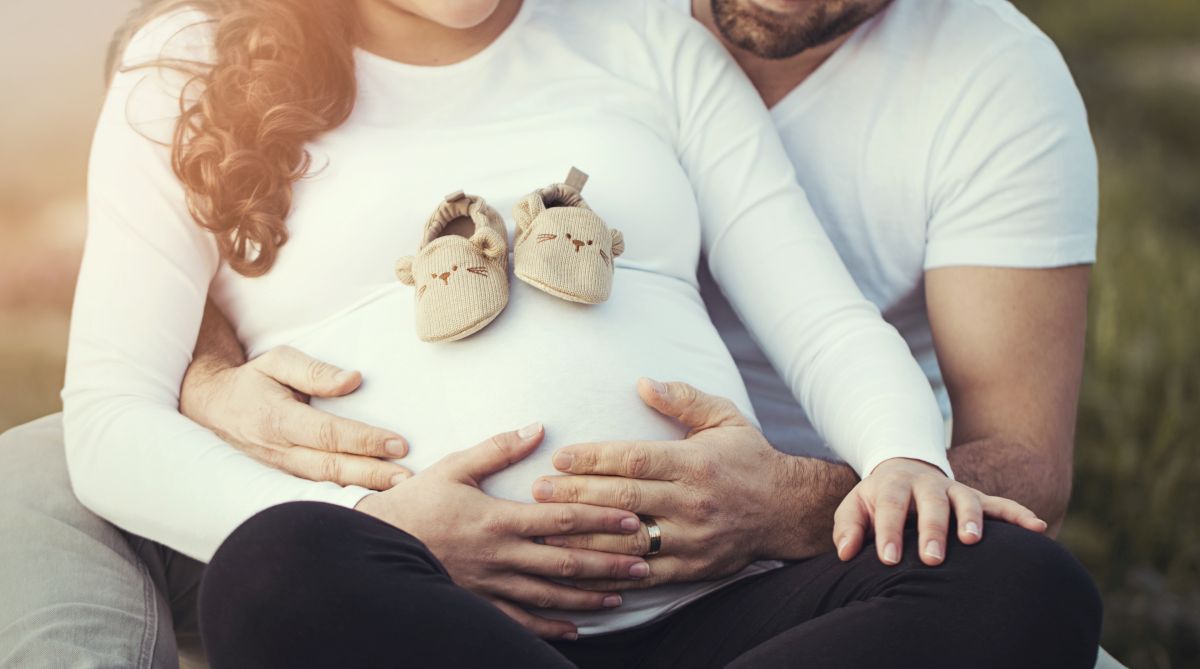Doctor slapped by patient’s relative as woman dies after childbirth at Kolkata hospital
The family of the deceased woman has claimed that she died of medical negligence and filed a police complaint against the hospital.
Pregnancy brings a lot of changes in a woman’s life and also inhibitions around myths related to delivery day.

(Photo credits: Getty images)
Pregnancy brings a lot of changes in a woman’s life and also inhibitions around myths related to the delivery day. Experts debunk many such myths for a woman to enjoy this beautiful phase.
Rinku Sengupta, Consultant Obstetrics and Gynecology, and Abhishek Bhartia, Director, Sitaram Bhartia Institute of Science and Research, list down few myths.
Advertisement
* Myth 1: Exercise during pregnancy will cause pre-term labour – Expecting women are often discouraged from climbing stairs and doing any exercise. Doctors encourage to-be mothers to walk for 40-45 minutes every day or take up antenatal exercises to build their stamina to endure labour. This helps in keeping active during pregnancy and also in recovering faster after childbirth.
Advertisement
* Myth 2: Travelling during pregnancy is dangerous – Women can safely travel during pregnancy. It is recommended that they travel in the second trimester because they may no longer experience physical discomfort, morning sickness or nausea. Doctors advise walking around and consuming fluids frequently, especially if the travel time exceeds 5 hours. It’s a good idea to carry maternity records and look up hospitals in the area in case of an emergency.
* Myth 3: Water breaking is an emergency – Water breaking during pregnancy is a part of the normal physiology of labour and is unlikely to be associated with acute emergency problems. About 20 to 30 per cent of women who are full term (more than 37 weeks of pregnancy) experiences water breaking before labour begins. A majority of them go into labour on their own. However, if the discharge is green or brown in colour, it is better to visit the hospital as soon as possible.
* Myth 4: Induction always leads to Caesarean – Induction of labour is done when it is safer for the mother or the baby to deliver rather than wait for labour to start naturally. Approximately 80 percent of mothers induced because of medical reasons have a normal delivery. Appropriate selection of mothers and appropriate inducing agents can maximise chances of a normal delivery.
* Myth 5: Once a caesarean, always a caesarean – This is not true. Many women who have had a caesarean before can have a vaginal delivery the second time around. A vaginal birth after caesarean has several benefits for the mother and the baby. For the mother, it is associated with decreased maternal morbidity and decreased risk of complications in future pregnancies. Mothers also experience less pain after delivery and have a faster recovery. They are back on their feet the same day and can start looking after their older children as well.
* Myth 6: Caesarean is safer for the mother and baby – Contrary to popular belief, a caesarean poses risks for both mother and baby. Other complications include blood loss, bladder or bowel injuries and chronic pelvic pain long after the caesarean delivery. Babies on the other hand experience respiratory distress, delayed breastfeeding, delayed skin to skin contact and thus a higher likelihood of diabetes, obesity, and allergies.
* Myth 7: Vaginal deliveries are unsafe – Babies also benefit from maternal stress hormones and the vaginal flora that gets transferred to them during a normal delivery.
* Myth 8: Instrumental deliveries are unsafe – Less than 10 per cent of women having vaginal deliveries require forceps or a vacuum. In the hands of a skilled obstetrician, both methods can be very safe for a mother and her baby.
* Myth 9: Cord around the neck requires a caesarean – Cord around the neck is a common occurrence and should not be a reason for a planned caesarean section. Most of the time, the loop of the cord is loose and does not harm the baby. The cord is also long enough for the baby to move through the birth canal without a problem. Expecting women with a cord around the baby’s neck should be closely monitored during labour so that any signs of fetal distress can be picked up immediately.
Advertisement